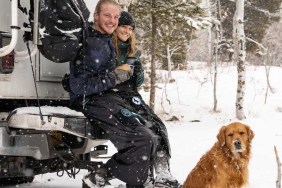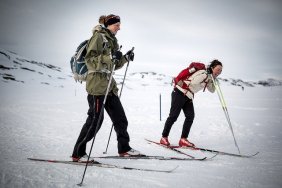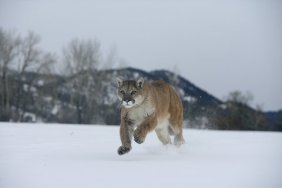 Cross-country skiing may involve several different styles of moving through the snow, including touring or racing on groomed ski tracks, or gliding through deep backcountry snow. Today we’ll take a look at some tips to help you choose the right pair of skis for your needs.
Cross-country skiing may involve several different styles of moving through the snow, including touring or racing on groomed ski tracks, or gliding through deep backcountry snow. Today we’ll take a look at some tips to help you choose the right pair of skis for your needs.
For the most part, you’ll have two basic ski designs from which to choose: general touring skis designed for track skiing or metal-edge skis made for skiing out-of-track, or on steeper terrain.
Touring skis tend to be longer, narrower, and more lightweight than their metal-edge counterparts. These features also make touring skis faster and more efficient on well-groomed groomed trails/tracks.
Metal-edge touring skis are typically shorter, which leads to better maneuverability. They’re also wider, which creates more stability and flotation in deeper snow, and have metal edges for better grip in icier conditions. Furthermore, their increased sidecut will boost your turning ability on steeper slopes. Their features make metal-edge skis heavier, but also more suitable for out-of-track terrain.
When it comes to length, keep in mind the fact that shorter skis tend to be slower, but they’re easier to handle, which is great for recreational skiers or those skiing in rugged terrain. If you’re stuck in between sizes, it’s probably best to opt for the shorter length if you’re less experienced. You can go with the longer length if you’re very athletic, or if you’re a quick learner.
You’ll discover that your ski’s width is measured at three different points—the tip, the waist, and the tail—and is represented by three numbers separated by slashes, such as 60/50/57. Generally speaking, your ski’s width will determine whether it can be used both in and out-of-track. Touring skis designed for both will fall between 65 and 70mm and won’t have metal edges. You can find skis with metal edges that work, but many touring centers don’t allow metal-edge skis on their tracks, so keep that in mind.
Be sure to consider a ski’s flex, as well, which influences your speed and turning ability. Soft-flexing skis tend to grip better and turn more easily on soft snow and at slow speeds, while a stiff flex works best on firm snow and at high speeds.
Who knew that picking up a pair of cross-country skis could be such an involved, meticulous process? Well, experienced outdoors enthusiasts know that when it comes to purchasing quality gear that may save your life in the backcountry, going over specifications with a fine-tooth comb is crucial. Keep the tips outlined today in mind if you’re in the market for skis this winter and you’ll be sure to pick the ones that are right for you.








